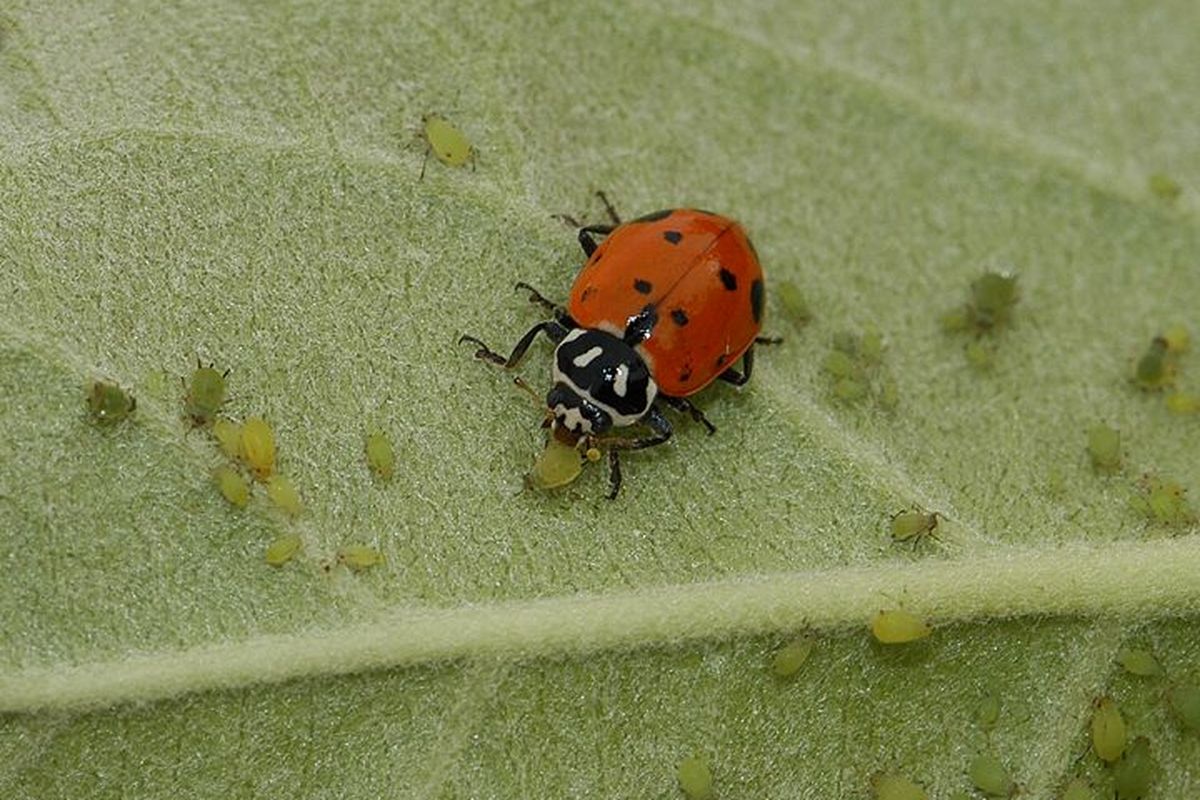Gardening: Lady beetles are invading - but that’s a good thing

For once, I have a story about a good-guy bug invasion. There are reports from all over the region of hordes of lady beetles being everywhere. The WSU Master Gardener Plant Clinic has received numerous calls about them. Gardeners are finding them everywhere and they are hanging out with beachgoers around Lake Coeur d’Alene.
Lady beetles or lady bugs and their larvae are one of our most common beneficial predator insects. The adults, but especially the larvae, seek out soft-bodied pests like aphids, mites and scales on all kinds of plants. The larvae are so voracious they are called aphid lions and can eat hundreds of aphids in a short span of time.
We have about 90 species of lady beetles in the Northwest and each one looks a little different. The convergent lady beetle adult is about one-fourth-inch long. Its black body is covered almost completely with its forewings, which are orange to red with 12 black spots. The transverse lady beetle adult is also one-fourth-inch long but more rounded than the convergent lady beetle and has fewer spots on its orange forewings. There are many others that are not as common and can be smaller, but all have the same general characteristics.
Adult lady beetles overwinter in the mountains and return to the valleys in the early spring, often flying great distances. In their winter home, they often form dense colonies. In the spring they return to the lower elevations, mate and begin seeking out prey. Female lady beetles eat soft-bodied insects but also seek out pollen. Each female can lay up to 200 pale yellow, rod-shaped eggs on the underside of a leaf. The eggs will hatch in two to 10 days, depending on the temperature. The larvae/aphid lions emerge and feed, molting several times before they attach themselves to a leaf and pupate into an adult. We can have one to three generations of lady beetles a year in the Northwest.
We are probably seeing a large population of them this year because our cool, wet spring brought out large aphid infestations. Given it is August, this could be their second generation. Encouraging them to come to your garden takes patience. First, you must be willing to let the aphid infestation exist for a couple of weeks. The adults will find it and begin laying eggs. Once the eggs hatch, the aphid lions will begin feeding. There needs to be a strong presence of adults and larvae to knock down the aphids. In the meantime, don’t use broad spectrum insecticides which will kill the lady bugs.
Can you successfully introduce lady beetles to your garden? Sometimes, but only if there is a heavy presence of their favorite bugs. If there isn’t, they will depart to somewhere that does. After all, they fly well, and there are no remedies that will force them to stay if there is no food. So, save your money and learn to identify aphid lions.